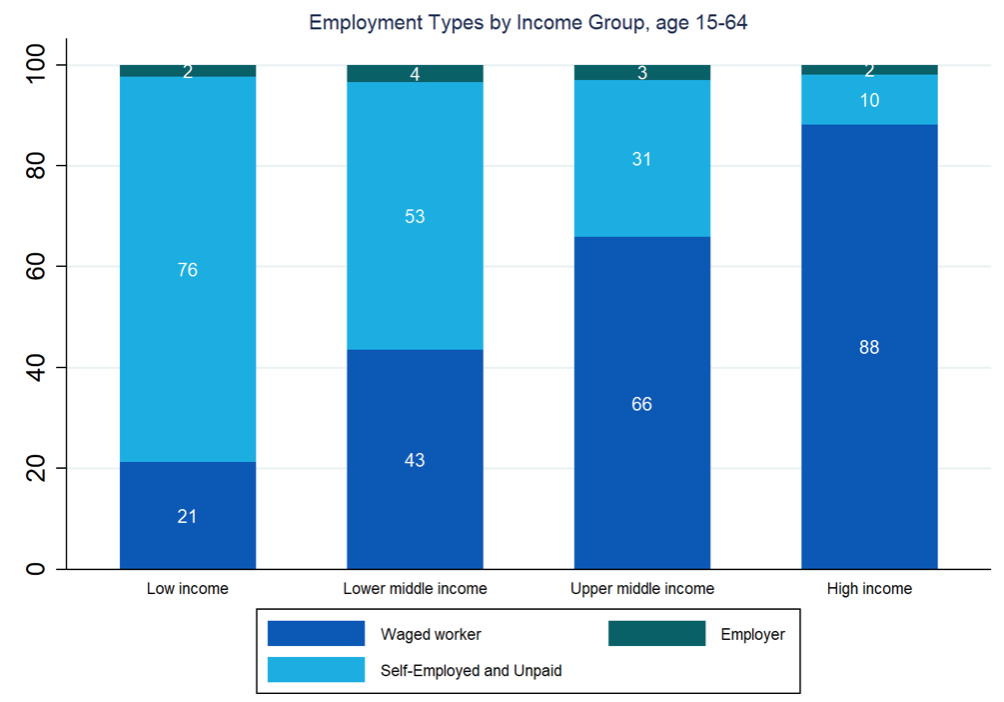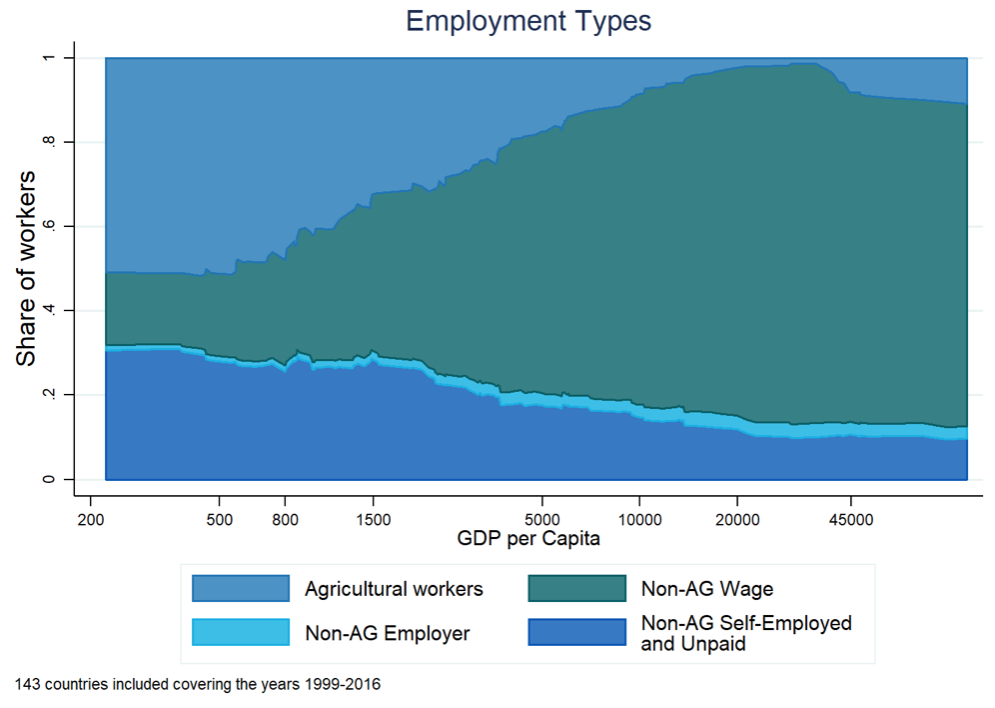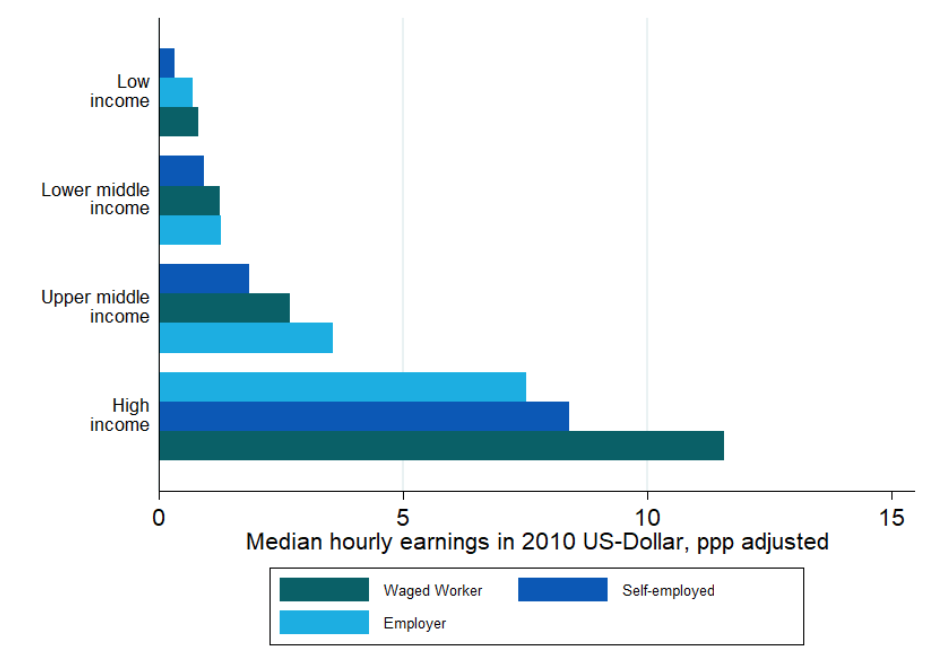Authors: Michael Weber and Jörg Langbein, Jobs Group, World Bank.
Waged employment is the pathway to better jobs for most workers. Workers in waged jobs have more stable and higher earnings, better quality employment, and longer work relationships than many other types of employment (Merotto, Weber & Aterido, 2018). Yet, employment patterns vary greatly by income levels — more developed countries have much higher shares of waged work. For Low Income Countries (LICs), the waged employment share averages 21 percent of total employment. For Lower Middle-Income Countries (LMICs), it averages around 43 percent, and for Upper Middle-Income Countries (UMICs), it increases to around 66 percent. For High Income Countries (HICs), waged employment is similar across GDP per capita, averaging around 88 percent of total employment. The big changes in the structure of labor markets occur within the middle-income range (chart 1).
Chart 1: The share of waged workers increases substantially for higher income economies

In general, an increase in waged employment is associated with a decline in the share of agricultural employment, which consists largely of self-employment and unpaid (family) work.
There is a (smaller) decrease in the share of non-wage employment outside agriculture, as waged employment shares rise with higher GDP PC (chart 2). In LICs, agriculture typically dominates employment, but the share of agriculture in total employment is much lower in both middle-income and high-income countries. Jobs strategies for agrarian LICs should therefore consider how to nurture off-farm waged work (e.g. Merotto, Weber & Aterido, 2018; Weber & Langbein 2018).
Chart 2: Waged employment becomes particularly important as economies move out of agriculture

Waged jobs tend to be “better jobs.” Waged workers have higher median earnings and more reliable working hours than self-employed workers. Waged workers typically have higher median earnings than self-employed workers in low, middle and high-income countries (Chart 3). These waged jobs generally also provide more earnings stability, upward mobility, and better working conditions (Gutierrez et al. 2019, WDR 2013). This also seems true when comparing self-employment to both formal and informal wage employment, i.e. jobs that come with or without legal or social protection. However, the improvements are bigger with formal than informal wage workers (e.g. Bargain and Kwenda 2014, Tansel and Kan 2012).
Chart 3: The median hourly labor income is usually higher for wage than self-employed workers

Sample size for the category “employers” is small. The Jobs Group is investigating why wage earnings for HICs exceed those of employers.
Note: Median hourly labor income in 2010 US-Dollar, international dollars. The variable is adjusted to the purchasing power parity following the respective indicator from the World Development Indicators database. The figure uses the latest household survey data for workers aged 15-64. It covers 140 countries over the period 1999-2016.
Source: Own calculations based on survey data from the World Bank I2D2 repository.
Having noted that waged jobs become more important as economies grow and transform, and that they tend to be “better” jobs, our next blog will show that waged employment is associated with faster poverty reduction and economic growth.



